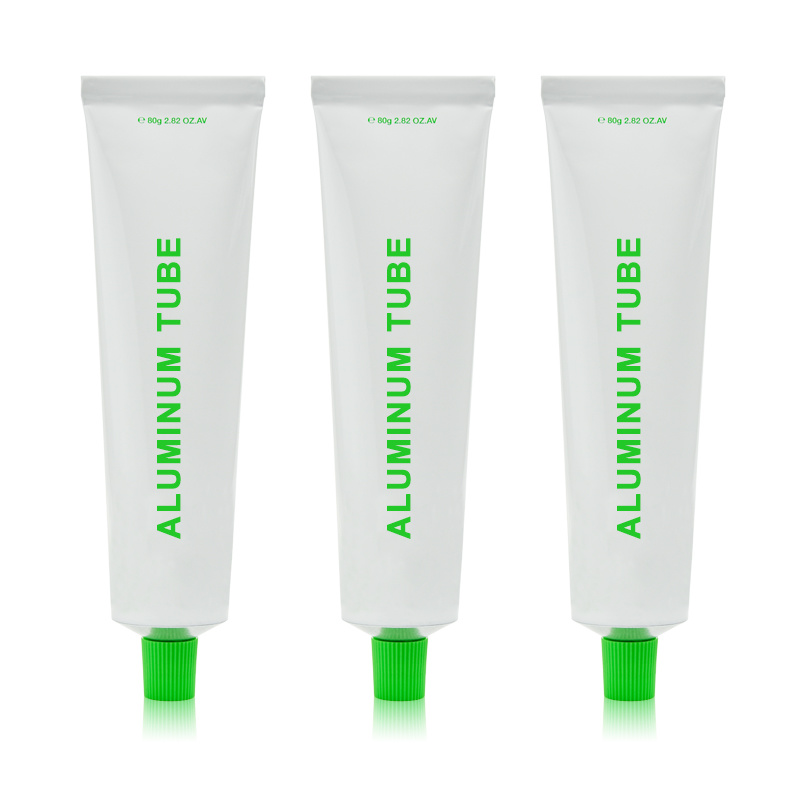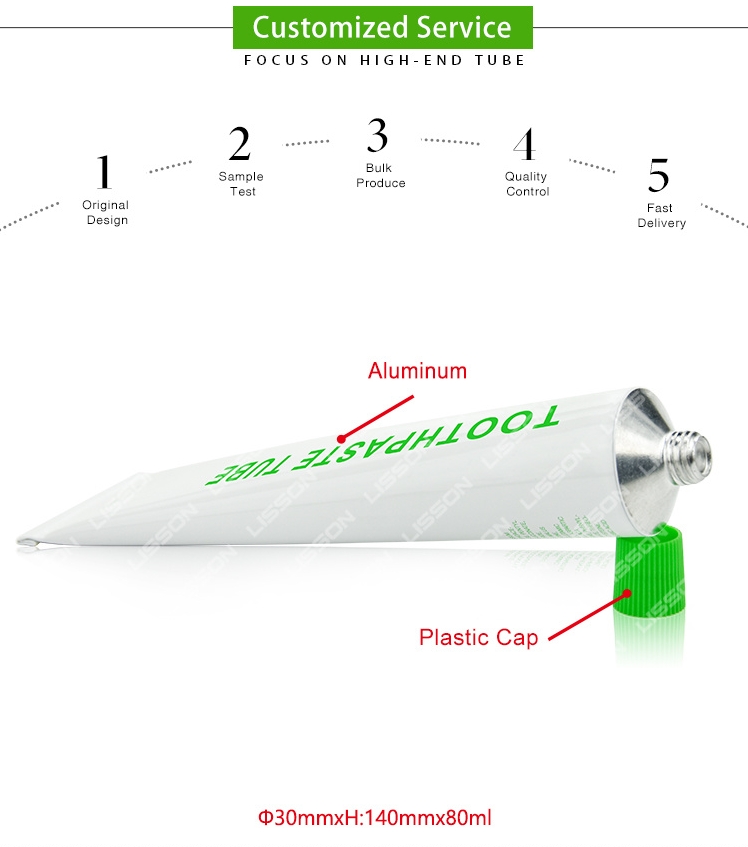Toothpaste is an essential part of daily oral hygiene, and while most consumers focus on the paste itself, the packaging—particularly the toothpaste tube—is equally important. Over the years, toothpaste tubes have evolved dramatically in material, functionality, design, sustainability, and user convenience. Whether you’re a product developer, retailer, or consumer interested in innovative packaging solutions, understanding the different types of toothpaste tubes can help in making informed decisions.

In this comprehensive guide, we explore the various types of toothpaste tubes, their benefits, drawbacks, and industry applications. We’ll also examine trends in eco-friendly packaging and how toothpaste tubes are adapting to consumer expectations.
1. Classification by Material
1.1 Plastic Laminate Tubes (PBL)
Plastic laminate tubes are made from multiple layers of plastic and are one of the most widely used types of packaging in the personal care and oral hygiene industries. These tubes are typically constructed using co-extrusion technology and are known for their flexibility, light weight, and durability.
Pros:
l Easy to manufacture
l Cost-effective
l Good resistance to leakage
l Printable for branding
Cons:
l Less eco-friendly compared to aluminum
Not always recyclable in all regions
1.2 Aluminum Toothpaste Tubes
Aluminum squeeze tubes offer excellent protection against light, air, and moisture, making them an ideal choice for certain toothpaste formulations, particularly those with active ingredients that degrade when exposed to air.
Pros:
l 100% recyclable
l High barrier protection
l Ideal for natural or sensitive toothpaste
Cons:
l Easily crimped and dented
l More expensive than plastic
1.3 Aluminum Barrier Laminate Tubes (ABL)
These tubes combine the barrier properties of aluminum with the flexibility of plastic. ABL tubes typically feature a sandwich-like structure of plastic-aluminum-plastic and are designed to offer the best of both worlds.
Pros:
l Enhanced barrier protection
l Aesthetic and functional
l Widely used for both medicinal and cosmetic toothpaste
Cons:
l Difficult to recycle due to mixed materials

2. Classification by Functionality and Usage
2.1 Squeeze Tubes
Traditional squeeze tubes are the most common format for toothpaste packaging. They are designed to be easily compressed by hand, allowing for the paste to be dispensed with minimal effort.
Ideal For:
l Everyday toothpaste
l Family-sized packaging
l Children and adults alike
2.2 Pump Tubes
These tubes use a pump mechanism to dispense toothpaste in controlled doses. Pump tubes are increasingly popular due to hygiene benefits and mess-free application.
Ideal For:
l High-end or premium toothpaste
l Consumers concerned about hygiene
l Kids and seniors
Bonus: Some pump tubes are refillable, making them more sustainable in the long term.
2.3 Stand-Up Tubes
Stand-up toothpaste tubes are designed with flat caps or sturdy bottoms that allow them to stand vertically on shelves or counters. This design promotes convenience, better shelf visibility, and less waste.
Ideal For:
l Retail display
l Small bathrooms
l Consumers looking for cleaner usage
3. Classification by Cap Design
3.1 Flip-Top Cap
Flip-top caps are the most convenient and widely used cap type. They allow for one-handed opening and secure closure, minimizing contamination and drying of the toothpaste.
Pros:
l Easy to open and close
l Attached to the tube, so not easy to lose
l Common in family-sized toothpaste
3.2 Screw Cap
Screw caps offer a more secure closure and are typically used in travel-sized toothpaste or tubes with high-viscosity formulas.
Pros:
l Strong sealing
l Good for long-term storage
l Compact
Cons:
l Can be lost easily
l Slightly less convenient than flip-tops
3.3 Twist Cap with Nozzle
This innovative design allows the user to twist open a nozzle tip to dispense a precise amount of paste. Often seen in specialty or travel tubes, this type is ideal for accuracy and reducing waste.

4. Special Types and Features
4.1 Travel-Sized Tubes
These are compact, lightweight, and compliant with TSA liquid guidelines, typically under 100ml.
Pros:
l Portable and lightweight
l Ideal for airline travel or gym bags
4.2 Kid-Friendly Tubes
Designed for small hands and often decorated with fun colors or cartoon characters. Some are also flavored more mildly to appeal to children.
Pros:
l Easy to grip and squeeze
l Engaging and fun
l Sometimes include built-in toothbrush caps
4.3 Eco-Friendly and Biodegradable Tubes
As sustainability becomes a key concern for consumers and brands, many manufacturers are turning to biodegradable, recyclable, or compostable materials. Some companies have even introduced toothpaste tablets or refill pods to avoid tubes altogether.
Innovative Options:
l Sugarcane-based bio-plastics
l Fully recyclable mono-material tubes
l Paper-based alternatives
Top Brands Using Eco Tubes:
l Colgate (Smile for Good)
l Hello Products
l Davids Natural Toothpaste
5. Industry Trends in Toothpaste Tube Design
5.1 Minimalist and Transparent Packaging
With the popularity of minimalist design aesthetics, many brands are moving toward sleek, clear, or frosted tubes that emphasize the purity of ingredients.
5.2 Smart Labeling and QR Codes
Some toothpaste tubes now include interactive elements, such as QR codes for more information, loyalty rewards, or digital instructions.
5.3 Refill and Reuse Systems
As part of circular economy initiatives, several startups offer toothpaste tubes that can be refilled or returned for reuse. This reduces waste and aligns with modern sustainable consumption habits.
6. Choosing the Right Toothpaste Tube for Your Brand or Product
When selecting the right tube type, consider the following:
l Target audience (children, adults, seniors)
l Formula sensitivity (natural, fluoride, charcoal)
l Retail environment (in-store, online)
l Sustainability goals
l Cost and production volume
Example Decision:
If you’re launching a natural toothpaste with active ingredients, an aluminum or ABL tube may be best due to its barrier properties. If your focus is convenience and eco-friendliness, a stand-up, bio-plastic tube with a flip cap may be more appropriate.
Conclusion
Toothpaste tubes might seem like a minor detail, but they play a significant role in product performance, branding, and sustainability. From traditional squeeze tubes to cutting-edge refillable models, each type offers unique advantages and challenges.
With growing awareness of environmental issues and consumer demand for convenience, toothpaste tube design is rapidly evolving. Whether you're launching a new dental care product or simply curious about how your favorite toothpaste is packaged, understanding these tube types can help you make more informed choices.
Copyright © 2025 Guangzhou Lisson® Plastic Co.Ltd | All Rights Reserved.
Hello, please leave your name and email here before chat online so that we won't miss your message and contact you smoothly.